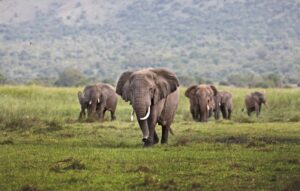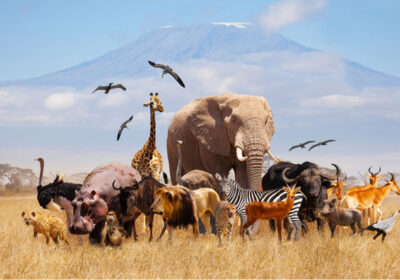Wildlife conservation and management are critical aspects of preserving biodiversity and ensuring the health of ecosystems. However, the strategies and policies employed in these efforts often spark intense debate and disagreement.
Controversial wildlife topics span a wide range of issues, from ethical considerations to economic impacts, scientific uncertainties, and cultural values. These debates can involve government agencies, non-profit organizations, scientists, local communities, and the general public.
Understanding the complexities and perspectives surrounding these topics is essential for informed decision-making and effective conservation practices. This introduction will explore some of the most prominent and contentious wildlife issues that continue to shape environmental discourse and action.
Understanding Controversial wildlife topics

Wildlife conservation and management are essential for maintaining biodiversity and ecosystem health, but they often involve complex and contentious issues. Controversial wildlife topics encompass a wide range of debates that can be driven by ethical considerations, economic impacts, scientific uncertainties, and cultural values.
These issues can spark passionate discussions among government agencies, non-profit organizations, scientists, local communities, and the general public.
Key Areas of Controversy
- Hunting and Poaching: While regulated hunting is seen by some as a tool for population control and funding conservation efforts, others view it as ethically unacceptable. Poaching, on the other hand, poses a severe threat to endangered species and fuels illegal wildlife trade.
- Habitat Destruction and Land Use: The conversion of natural habitats for agriculture, urban development, and infrastructure projects leads to habitat fragmentation and loss, which is a major cause of species decline. Balancing human needs and wildlife conservation is a significant challenge.
- Invasive Species Management: Introducing or controlling invasive species can have profound impacts on native ecosystems. The methods used for management, such as chemical treatments or culling, often generate public concern and debate.
- Climate Change: The impact of climate change on wildlife is a critical issue. Rising temperatures, changing precipitation patterns, and extreme weather events affect habitats and food sources, leading to shifts in species distribution and behavior.
- Captive Breeding and Zoos: The role of zoos and captive breeding programs in conservation is contentious. While they can help preserve endangered species, concerns about animal welfare and the effectiveness of reintroduction programs persist.
- Human-Wildlife Conflict: As human populations expand, encounters with wildlife increase, leading to conflicts that can result in property damage, crop loss, and threats to human safety. Developing strategies to mitigate these conflicts is complex and often controversial.
220 Controversial wildlife topics

Here are 300 controversial wildlife topics categorized into broader themes for better organization:
Hunting and Poaching
- Trophy hunting ethics.
- Impact of poaching on elephant populations.
- Rhino horn trade and poaching.
- Legal versus illegal hunting.
- Hunting quotas and regulations.
- Poaching penalties and law enforcement.
- Subsistence hunting by indigenous communities.
- Canned hunting practices.
- Trophy hunting’s impact on local economies.
- Sport hunting of endangered species.
- Role of hunting in wildlife population control.
- Hunting in national parks.
- The use of dogs in hunting.
- Falconry and wildlife conservation.
- Hunting seasons and breeding cycles.
- Cultural significance of hunting.
- Crossbow versus firearm hunting regulations.
- Bow hunting ethics and regulations.
- Bear baiting and hunting ethics.
- Impact of hunting on non-target species.
Habitat Destruction and Land Use
- Deforestation for palm oil plantations.
- Urban sprawl and wildlife displacement.
- Mining impacts on wildlife habitats.
- Road construction and habitat fragmentation.
- Agricultural expansion into protected areas.
- Wetland drainage for development.
- Logging practices in old-growth forests.
- Impact of tourism infrastructure on wildlife.
- Oil drilling in wildlife refuges.
- Wind farms and bird fatalities.
- Urban green spaces for wildlife.
- Renewable energy projects and wildlife impacts.
- Grazing land versus wildlife reserves.
- Forest management practices and wildlife.
- Hydroelectric dams and fish migration.
- Coastal development and marine life.
- Impact of golf courses on local wildlife.
- Industrial pollution and habitat degradation.
- Military training grounds and wildlife.
- Protected areas and local community rights.
Invasive Species Management
- Culling feral cats for native bird conservation.
- Introduction of non-native plants.
- Biological control of invasive species.
- Impact of zebra mussels on aquatic ecosystems.
- Management of invasive fish species.
- Invasive species in island ecosystems.
- Legal regulations on exotic pets.
- Economic impacts of invasive species.
- Public awareness and invasive species.
- Genetic modifications to control invasives.
- Ethical concerns over chemical controls.
- Introduction of natural predators.
- Habitat restoration after invasive removal.
- Trade and transportation of invasive species.
- Climate change and invasive species spread.
- Community involvement in invasive species management.
- Role of government in invasive species control.
- Impact of invasive species on agriculture.
- Prevention strategies for invasive species.
- Invasive species and global trade.
Climate Change
- Coral bleaching and climate change.
- Impact of climate change on polar bears.
- Changing migration patterns of birds.
- Effects on marine mammal populations.
- Amphibians and climate change.
- Shifts in plant phenology and wildlife.
- Wildfires and habitat loss.
- Sea level rise and coastal habitats.
- Ocean acidification and marine life.
- Permafrost thawing and wildlife.
- Climate change refugia for wildlife.
- Impact on freshwater ecosystems.
- Assisted migration as a conservation strategy.
- Changing disease patterns in wildlife.
- Impact on food availability for wildlife.
- Extreme weather events and wildlife.
- Adapting conservation strategies to climate change.
- Role of zoos in climate change education.
- Citizen science in monitoring climate impacts.
- Global warming and insect populations.
Captive Breeding and Zoos
- Ethics of keeping large mammals in captivity.
- Role of zoos in species reintroduction.
- Genetic diversity in captive breeding programs.
- Captive breeding for commercial purposes.
- Impact of captivity on animal behavior.
- Zoo accreditation standards.
- Education versus conservation in zoos.
- Wildlife sanctuaries versus zoos.
- Breeding endangered species in captivity.
- Public perception of zoos.
- Funding for captive breeding programs.
- Captive breeding success stories.
- Legal regulations on captive wildlife.
- Role of aquariums in marine conservation.
- Welfare standards for captive animals.
- Controversies over cetaceans in captivity.
- Ethical considerations of breeding hybrids.
- Impact of captivity on lifespan of animals.
- Conservation messaging in zoos.
- Rehabilitation and release programs.
Human-Wildlife Conflict
- Strategies for reducing crop raiding by elephants.
- Predator control to protect livestock.
- Urban wildlife management.
- Wildlife crossings and road safety.
- Coexistence strategies for large carnivores.
- Compensation schemes for wildlife damage.
- Non-lethal deterrents for wildlife.
- Relocation of problem animals.
- Legal protections for species involved in conflicts.
- Community involvement in conflict resolution.
- Role of technology in managing conflicts.
- Impact of fencing on wildlife movement.
- Education programs for reducing conflicts.
- Role of traditional knowledge in conflict resolution.
- Economic impacts of wildlife conflicts.
- Impact of tourism on human-wildlife conflicts.
- Wildlife attacks on humans.
- Zoning laws and wildlife habitat protection.
- Collaborative conservation efforts.
- Role of media in shaping public perception.
Wildlife Trade and Trafficking
- Ivory trade and elephant conservation.
- Impact of the exotic pet trade on wild populations.
- Legal versus illegal wildlife trade.
- Sustainable trade practices.
- Role of CITES in regulating wildlife trade.
- Bushmeat trade and its impacts.
- Wildlife trafficking networks.
- Role of e-commerce in wildlife trade.
- Impact of traditional medicine on wildlife.
- Enforcement of wildlife trade laws.
- Public awareness campaigns on wildlife trade.
- Economic drivers of wildlife trafficking.
- Role of zoos in preventing wildlife trade.
- Community alternatives to wildlife trade.
- Technology in tracking illegal trade.
- Role of NGOs in combating wildlife trafficking.
- Case studies of successful interventions.
- Policy recommendations for trade regulation.
- Impact on local communities.
- Global collaboration to tackle wildlife trade.
Endangered Species Protection
- Criteria for listing endangered species.
- Effectiveness of recovery plans.
- Role of captive breeding in species recovery.
- De-listing of recovered species.
- Genetic bottlenecks in small populations.
- Role of habitat corridors in species recovery.
- Impact of human activities on endangered species.
- Funding for endangered species programs.
- Political influences on conservation policies.
- Role of citizen science in monitoring populations.
- Reintroduction of species to former habitats.
- Success stories in species recovery.
- Legal protections for endangered species.
- Impact of climate change on endangered species.
- Collaborative conservation efforts.
- Role of zoos and aquariums in species protection.
- Controversies over prioritizing species.
- Impact of invasive species on endangered species.
- Community involvement in species recovery.
- Ethical considerations in species conservation.
Marine Conservation
- Overfishing and its impacts on marine ecosystems.
- Marine protected areas and biodiversity.
- Role of aquaculture in marine conservation.
- Impact of plastic pollution on marine life.
- Whale and dolphin hunting ethics.
- Coral reef conservation strategies.
- Deep-sea mining and marine biodiversity.
- Bycatch and its impact on non-target species.
- Sustainable fishing practices.
- Role of marine reserves in conservation.
- Impact of climate change on marine life.
- Marine invasive species management.
- Ocean acidification and its impacts.
- Role of NGOs in marine conservation.
- Public awareness of marine issues.
- Marine wildlife rehabilitation programs.
- Impact of shipping on marine life.
- Legal frameworks for marine conservation.
- Community-led marine conservation.
- Impact of tourism on marine environments.
Use of Technology in Conservation
- Drone surveillance in wildlife monitoring.
- GPS tracking of endangered species.
- Genetic engineering for species conservation.
- Use of AI in wildlife management.
- Ethical implications of surveillance technology.
- Remote sensing for habitat mapping.
- Role of bioacoustics in monitoring populations.
- Camera traps for studying elusive species.
- Citizen science apps for wildlife data collection.
- Use of satellite imagery in conservation.
- Impact of technology on traditional practices.
- RFID tagging for animal tracking.
- Technological innovations in anti-poaching.
- Use of eDNA for species detection.
- Big data in conservation decision-making.
- Role of technology in habitat restoration.
- Blockchain for tracking wildlife trade.
- Internet of Things (IoT) in wildlife management.
- Virtual reality for conservation education.
- Ethical concerns of genetic modifications.
Ethical Considerations
- Animal rights versus conservation needs.
- Ethics of wildlife tourism.
- Role of animals in traditional medicine.
- Cultural practices involving wildlife.
- Ethical concerns of wildlife photography.
- Welfare of animals in research.
- Impact of human recreation on wildlife.
- Ethical sourcing of conservation funding.
- Role of religion in wildlife conservation.
- Ethical hunting practices.
- Respect for indigenous knowledge.
- Balancing human needs with animal welfare.
- Ethical considerations in habitat modification.
- Role of ethics in conservation policy.
- Ethical wildlife management in urban areas.
- Welfare of animals in rehabilitation centers.
- Human intervention in natural processes.
- Impact of ecotourism on wildlife behavior.
- Ethical sourcing of wildlife products.
- Role of ethics in climate change action.
Conclusion
Controversial wildlife topics highlight the complex intersection of ethics, economics, science, and cultural values in conservation efforts. These discussions are crucial for shaping sustainable practices that balance human needs with biodiversity preservation.
By fostering informed dialogue and considering diverse perspectives, we can work towards effective solutions that protect wildlife and ecosystems for future generations.

